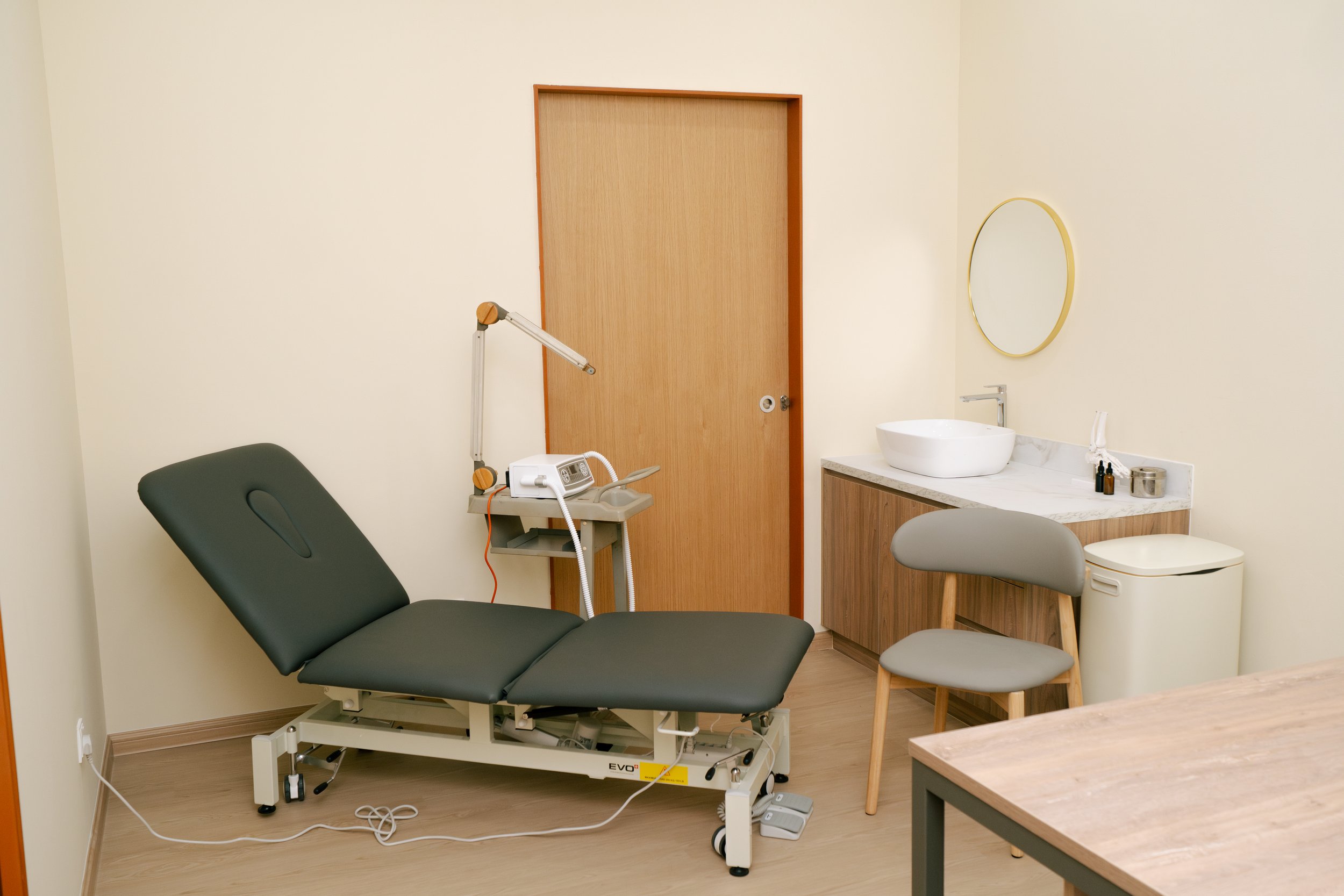
Diabetic Foot Ulcers
What Is a Diabetic Foot Ulcer?
A diabetic foot ulcer is an open sore or wound that develops in a person with diabetes, usually on the bottom or side of the foot, toes, or heel. Due to poor blood circulation and nerve damage (peripheral neuropathy), a person with diabetes may not feel pain from a cut, blister or injury. Without noticing the injury, it can go untreated — leading to infection and tissue breakdown.
Foot ulcers are estimated to affect 15–25% of people with diabetes during their lifetime and are a leading cause of foot-related hospitalisations and amputations.
Causes and Risk Factors
Several diabetes-related complications can contribute to the development of a foot ulcer, including:
Peripheral neuropathy – loss of sensation in the feet makes it harder to notice injuries or pressure points
Peripheral arterial disease (PAD) – reduced blood flow to the feet slows healing and increases infection risk
High blood sugar levels – impairs the body’s ability to fight infection and repair wounds
Foot deformities – bunions, claw toes or Charcot foot can increase pressure and rubbing on specific areas
Inappropriate footwear – shoes that are too tight or unsupportive can cause friction or injury
Poor foot hygiene – can contribute to infection or delay healing
History of previous ulcers or amputations – increases risk of recurrence
Symptoms of a Diabetic Foot Ulcer
Early signs can be subtle. You may have:
A red, swollen, or open wound on your foot
Discharge or pus leaking from the wound
A black or foul-smelling area on the foot (sign of dead tissue or gangrene)
Swelling and redness around a specific area
Warmth or increased skin temperature in one foot
Pain or tenderness — although some people feel no pain due to nerve damage
Important: if you have diabetes and notice any wound on your foot that isn’t healing — seek help immediately.
What Happens if I Ignore a Diabetic Foot Ulcer?
Ignoring a diabetic foot ulcer can lead to severe complications, including:
Infection – cellulitis, abscesses, bone infections (osteomyelitis)
Tissue death (gangrene) – requiring surgical removal
Amputation – if the infection or ulcer becomes uncontrollable
Long hospital stays and increased healthcare costs
Reduced mobility and quality of life
How We Diagnose Diabetic Foot Ulcers
At KL Foot Specialist Podiatry, we start with a comprehensive foot and wound assessment, including:
Wound size, depth and location
Presence of infection or signs of necrosis
Blood flow testing (circulation assessment)
Pressure and gait analysis
Footwear evaluation
Diabetic foot risk classification
If needed, we may refer you for diagnostic imaging (X-ray or MRI) or coordinate with your GP or endocrinologist for blood tests and medical management.
Treatment for Diabetic Foot Ulcers
Your ulcer care will be customised depending on the severity of the wound and any underlying risk factors. Treatment typically involves:
Wound debridement – removing dead tissue to promote healin
Wound dressings – specialised dressings to keep the wound clean and moist
Infection control – oral or topical antibiotics if needed
Offloading devices – such as felt padding, custom orthotics or a total contact cast to relieve pressure
Footwear modifications – switching to medical-grade or extra-depth shoes
Blood glucose management – we work with your doctor to improve blood sugar control
Regular monitoring – consistent follow-up to track progress and adjust care
In more advanced cases, we coordinate with hospitals and vascular surgeons if surgical intervention or hospital-based care is required.
Prevention of Diabetic Foot Ulcers
The best way to avoid complications from diabetic ulcers is through early intervention and prevention. Here's how:
Daily foot checks – inspect your feet every day for cuts, redness, swelling, or blisters
Wash and dry your feet carefully – especially between the toes
Moisturise daily – to prevent dry and cracked skin
Wear properly fitting shoes – avoid going barefoot
Choose diabetic-friendly socks – no seams, gentle compression
See your podiatrist regularly – for ongoing assessments and foot care
We recommend all patients with diabetes have a foot health check every 3–6 months, depending on their risk level.
Book an Appointment
If you or a loved one has diabetes and is worried about a foot wound, don’t wait. Early assessment and care can prevent serious complications.
Book an appointment today with our experienced team at KL Foot Specialist Podiatry and take the first step toward healthier feet.
